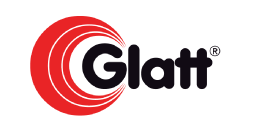History
22 Years of DCVMN: A Timeline
WHO meeting of International Public Sector Vaccinology Institutions in Geneva in March 2000, called vaccine manufacturers from developing countries to form a constituency and holds 1st AGM in Noordwijk.
DCVMN had 10 members; 3 members with WHO pre-qualified vaccines.
DCVMN met on 26–27 April 2001 in Bandung, Indonesia, formalizing strategic objectives and governance and grows to 20 members.
A DCVMN member, Serum Institute of India, engaged in a historical Partnership with WHO and PATH among others, to develop a vaccine for the African meningitis belt countries.
DCVMN had 13 members.
Success in increasing access to HepB and Hib containing DPT combination vaccines with the help from technology transfer from The Netherlands Vaccine Institute (NVI) to three DCVMN member companies: Bio Farma, Serum Institute of India and Biological E.
DCVMN had 19 members in 2004
DCVMN registered an office in Hyderabad, India.
DCVMN had 29 members in 2005, with 7 pre-qualified vaccines.
DCVMN members engaged in the Global Action Plan for Influenza Vaccines. In response to the human-to-human transmission of H5N1, WHO called to strengthen the capacity of developing countries to produce influenza vaccines.
WHO engaged six DCVMs from Brazil, India, Indonesia, Mexico, Thailand and Vietnam, who were awarded grants in 2007 for technology transfers to establish manufacturing capacity for influenza vaccines.
DCVMN had 20 members; 5 members with WHO pre-qualified vaccines.
DCVMN members – Serum Institute of India, China National Biotec Group, Panacea, Beijing Minhai, LG Chem – engaged in the Sabin-IPV vaccine development upon request of WHO.
The first fully liquid Pentavalent (DTwPHepBHib) for Childhood vaccination was launched by Panacea Biotec and granted WHO pre-qualification for Gavi supply.
DCVMN had 19 members; 7 members with WHO pre-qualified vaccines.
Last endemic case of rubella in the Americas observed in February 2009, with the help of the consistent supply of Rubella containing vaccines from Serum Institute of India and Biomanguinhos
WHO declares the start of 2009 influenza pandemic
In the context of the H1N1 Pandemic, three DCVMs readied an influenza vaccine for global use in a record time of 9 months.
DCVMN had 23 members; 7 members with WHO pre-qualified vaccines.
The first vaccine made for Africa, the group A meningitis vaccine produced by Serum Institute of India, and largely financed by Bill & Melinda Gates Foundation, was approved for use in Sub-Saharan Africa, resulting in 100 million people being vaccinated.
DCVMN had 27 members; 6 members with WHO pre-qualified vaccines.
On 13 January 2011, India recorded its last case of poliomyelitis, notably through the contribution of DCVMs to the supply of oral polio vaccines.
DCVMN had 27 members; 6 members with WHO pre-qualified vaccines.
The first Hepatitis E Vaccine produced by INNOVAX was approved in China.
The DCVMN International Secretariat in Switzerland was formally established on February 15th, 2012 as a not-for-profit international association of vaccine manufacturers.
DCVMN had 37 members; 7 members with WHO pre-qualified vaccines.
Japanese encephalitis vaccines from DCVMs -Chengdu Biological Products Institute and from Biological E – received WHO pre-qualification.
Bharat Biotech launched the first typhoid conjugate vaccine.
DCVMN had 39 members; 10 members with WHO pre-qualified vaccines.
Executives of the Developing Countries Vaccine Manufacturers Network met Dr. Margaret Chan, WHO Director General.
DCVMN had 41 members; 10 members with WHO pre-qualified vaccines.
DCVMN member EuBiologics receives WHO pre-qualification for its oral cholera vaccine. The vaccine was developed through a partnership with IVI.
DCVMN had 45 members; 12 members with WHO pre-qualified vaccines.
Two EV 71 vaccines were launched in China by IMCAMS and Sinovac.
DCVMN had 50 members; 13 members with WHO pre-qualified vaccines.
The first fully liquid hexavalent vaccine based on whole-cell Pertussis and Salk-based Injectable Polio Vaccine was produced by Panacea Biotec, in collaboration with the Serum Institute of India.
DCVMN had 50 members; 14 members with WHO pre-qualified vaccines.
Two new Rotavirus vaccines from Serum Institute of India and Bharat Biotech received WHO pre-qualification.
DCVMN had 54 members; 13 members with WHO pre-qualified vaccines.
A pneumococcal vaccine produced by Serum Institute of India received WHO pre-qualification. Since 2008, SII and PATH have collaborated to develop the vaccine, with support from the Bill & Melinda Gates Foundation.
DCVMN had 43 members; 15 members with WHO pre-qualified vaccines.
On 25th August 2020, the Africa Regional Certification Commission certified the WHO African Region as wild polio-free after four years without a case.
The first vaccine granted WHO Emergency Use. WHO listed the nOPV2 vaccine from Bio Farma, Indonesia, for emergency use to address cases of a vaccine-derived polio strain in African and East Mediterranean countries.
DCVMN members rose to the occasion to respond to the COVID-19 pandemic as quickly and effectively as possible. Over 11.2 billion COVID-19 vaccines were produced globally in 2021 of which approximately 60% came from DCVMN member companies. In one year, 7 DCVMN members partnered with multinational companies to manufacture and supply of COVID-19 vaccines. 6 COVID-19 vaccines from DCVMN members have been granted Emergency Use Authorization (EUA) by the respective countries and WHO issued Emergency Use Listing (EUL) to 5 COVID-19 vaccines from DCVMN members.









